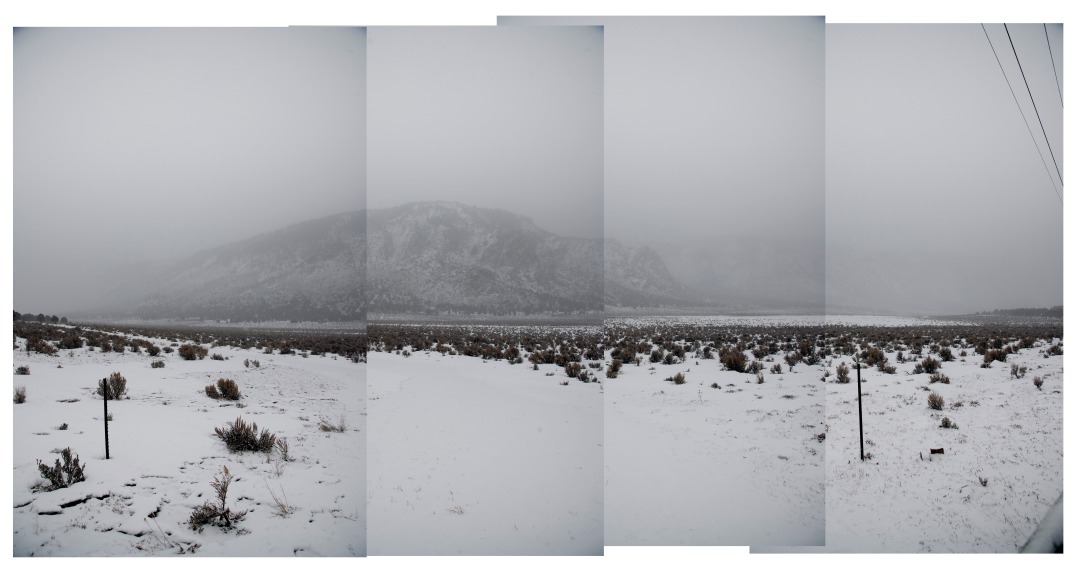Unaweep Canyon is central to Xcel Energy’s big plans for renewable energy production in Colorado

Xcel Energy has a low-tech plan for creating clean power in one of Colorado’s geologic wonders.
As Colorado’s largest utility, with 1.5 million electricity customers, pushes toward its goal of delivering 100% carbon-free power by 2050, the company is seeking federal approval for the state’s largest hydropower project on the Western Slope in Unaweep Canyon south of Grand Junction.
Xcel wants to use gravity and moving water – it’s called pumped-storage hydropower – to generate clean electricity for more than 325,000 homes. The utility last fall requested a preliminary, four-year permit from the Federal Energy Regulatory Commission to study building two reservoirs connected by a 4,900-foot pipeline atop Unaweep Divide.
The Unaweep Pumped Storage Hydropower Project is little more than a concept right now and a preliminary permit would allow the energy provider to “investigate the feasibility,” Xcel spokeswoman Michelle Aguayo said.
“We will need to determine the suitability of the site, with consideration of geology, cost, environmental impacts, nearby land use and other engineering criteria,” she said in an emailed statement. “We are also engaging with the community and key stakeholders as part of the process.”

The Xcel proposal says the maps included in its proposal – which include the lower reservoir on top of Colorado 141 near Unaweep Divide – provide “only a general indication of a possible development” and studies under the preliminary permit “would lead to refined layouts.” Xcel’s maps also place the lower reservoir on several homes near Unaweep Divide.
Unaweep translates from Ute as “parting waters” or “canyon with two mouths.” It is a geologic marvel, heralded as the only canyon on the planet with two exits. Scientists for decades have studied the puzzling canyon, which has creeks draining from both ends. It’s there, atop the easy-to-miss Unaweep Divide, where East Creek starts rolling east toward the Gunnison River and West Creek starts rolling west toward the Dolores River, that Xcel envisions the state’s largest hydropower project.
“We want to emphasize that we are still in the very early stages of evaluating this project and therefore can’t speculate on the cost of the project or other variables,” Aguayo said.

Pumped-storage hydro is the fast-growing darling of power providers weaning themselves from coal and natural gas. It works like a giant battery, providing power during peak demand in the evening, when the flow of electricity ebbs from traditional renewable sources like wind and solar.
“One significant hurdle standing between the United States and its goal of 100% carbon-free electricity by 2035 and a net-zero energy economy by 2050 is a lack of clean energy storage,” reads a November 2021 U.S. Department of Energy announcement of a new web-based tool to help power providers assess pumped-storage hydropower. “The good news is solutions are already available—chief among them PSH.”
In a pumped-storage hydro project, water flows from one reservoir downhill through a pipeline to a lower reservoir. The gravity-fed water in the pipeline spins turbines that generate electricity. Then the system uses energy during low-demand hours to push the water back up to the top reservoir. When the two reservoirs are not connected to any other water source, it’s called a closed loop system. The proposal by Xcel Energy is a closed loop system and will require a large amount of water only when the two lined reservoirs fill for the first time.
Here’s what Xcel Energy’s Public Service Co. is proposing:
- The upper reservoir would be 71 acres at an elevation of 8,627 feet, with 5,912 acre-feet of water behind a 96-foot dam.
- The lower reservoir, at 7,075 feet above sea level would be 88 acres, with the same amount of water behind a 73-foot dam.
- A 19-mile pipeline with five booster stations would fill the reservoirs from a new well field next to the Gunnison River near the village of Whitewater.
- A steel-lined penstock with a diameter of 22 feet would run 4,900 feet between the two reservoirs.
- A 360-foot long, 90-foot wide, 150-foot tall underground cavern — a powerhouse — would house three pump turbines, which would generate electricity 10 hours a day, 365 days a year.
- A 24-mile transmission line would connect to Xcel’s Grand Junction substation.
- The project’s capacity would be 800 megawatts of electricity, with an average annual energy production of 2,780 gigawatt hours.
Colorado lawmakers last year unanimously approved House Bill 1052, legislation sponsored by Larimer County Republicans, that removed restrictions on pumped hydroelectric facilities as a renewable energy source. The new law includes pumped-storage hydropower under the state’s renewable energy standards. The law, which does not allow the facilities to qualify as renewable energy if they burn fossil fuels to pump water, are located on natural waterways or violate state water quality standards, opened the, ahem, floodgates for Xcel.
Mesa County’s board of commissioners have not studied the proposal, said Commissioner Scott McInnis, who sees some obstacles for the utility with a mix of public and private landowners in Unaweep Canyon.
“It will be a challenge for them,” McInnis said, “but they’ve got muscle and they’ve got money.”
The Bureau of Land Management had an “informal meeting” with Xcel to discuss the possibility of the project on BLM lands in Unaweep Canyon, said Greg Wolfgang, the field manager of the Grand Junction Field Office in the BLM’s Upper Colorado River District.
The BLM offered feedback on protecting vistas along the Unaweep-Tabeguache Scenic and Historic Byway along Colorado 141, as well as issues with wildlife on the Uncompahgre Plateau and in the canyon, Wolfgang said.
“Since there has been no formal proposal, the BLM has not conducted any feasibility studies,” Wolfgang said.

There are 43 pumped-storage hydro power plants in the U.S. capable of producing 22 gigawatts — or 22,000 megawatts — of electricity, according to the latest hydropower report from Department of Energy. That’s about 7% of the total electricity generated in the country. Power providers have spent $7.8 billion on upgrades to pumped-storage hydro facilities since 2010. While most systems were built several decades ago, the number of new pumped-storage hydro projects and upgrades to existing facilities in the planning and development stage increased 31% in 2019, with proposed new projects and upgrades spread across 21 states.
Colorado has two other pumped-storage hydro systems. Xcel’s Cabin Creek opened in 1967 and drops water 1,500 vertical feet above Georgetown to generate up to 324 megawatts of electricity. Of Xcel’s six hydroelectric power plants — including the Ames Hydroelectric Generating Plant near Ophir, built in 1890 as the country’s first alternating current hydro power plant — only Cabin Creek uses pumped-storage technology. The proposed project in Unaweep Canyon would more than double the total electrical generation capacity of all six of Xcel’s hydropower plants.

The U.S. Bureau of Reclamation operates the state’s second pumped-storage hydropower plant. The Mount Elbert Powerplant opened southwest of Leadville in 1981 with a capacity of 200 megawatts.
In November 2020, the Federal Energy Regulatory Commission awarded a preliminary permit to Idaho-based Gridflex Energy to begin planning a pumped-storage hydro project in Moffat County between Craig and Hayden. The energy company wants to develop a closed-loop project that would move water between two new 4,800 acre-foot reservoirs on private land to generate up to 600 megawatts of electricity. The proposal for the Craig-Hayden Pumped Storage Project would connect with transmission lines running from the coal-fired Craig and Hayden plants that are scheduled to close by 2030.
Pumped-storage hydro projects cost about $2,000 per kilowatt to build, according to the National Hydropower Association. (That compares to about $1,800 per kilowatt for utility-scale solar and $1,400 per kilowatt for onshore wind turbines.)
So the Xcel project could cost around $1.6 billion. It’s expensive, but power providers see PSH projects providing clean electricity for centuries, said Linda Ciocci, the executive director of the Hydropower Foundation.
“The only form of major utility-grade storage is pumped-storage hydro,” Ciocci said. “Hydro is really going through a renaissance today.”
And leading that renaissance is pumped-hydroelectric generation, Ciocci said. It delivers security to grid systems by providing renewable energy during periods when other renewables, like wind and solar, fade. Ciocci said PSH is critical for power suppliers reaching renewable energy goals.
“Xcel is not going to get to its 2050 target for renewable energy without having PSH on the grid,” she said. “It’s a pretty fascinating area of growth and reinvestment and interest right now.”
While batteries may be flashier, pumped-storage hydro can offer the same benefits without mining for minerals or worrying about disposal of used batteries. Ciocci said many PSH projects also incorporate recreation and municipal water storage, pointing to the Smith Mountain Project, which delivers electricity and supports a tourism and recreation-based economy in Virginia.
“There’s value beyond energy in a lot of these projects,” she said.

This content was originally published here.







